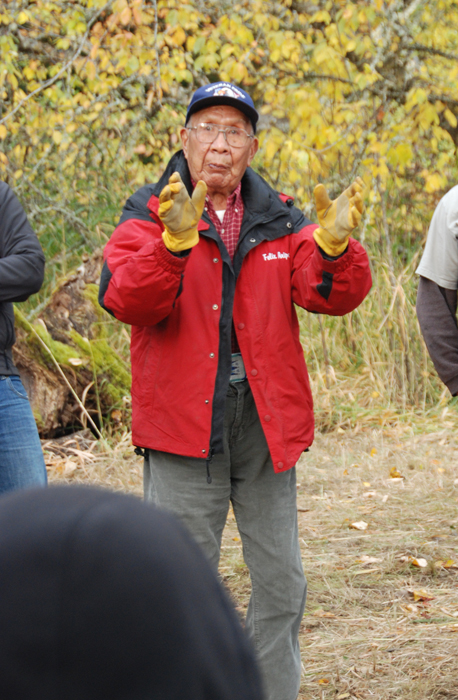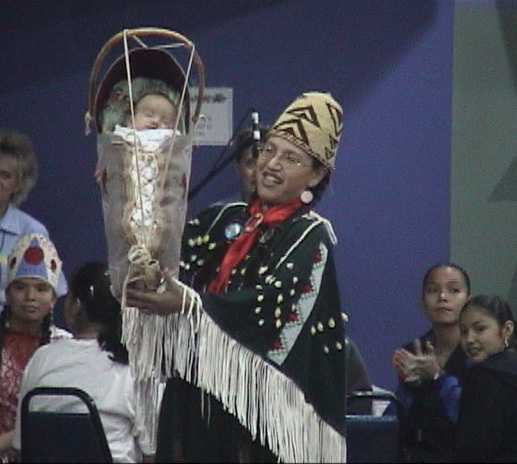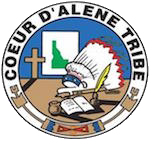Lesson Plan: Empathetic Adaptability
- Introduction and Objectives
- Knowledge and Skill Competencies Sought
- Background
- Learning Activity
- State of Idaho Content Standards: Interdisciplinary Humanities, Grades 9-12
1. Introduction and Objectives.
The primary objective of this lesson plan is to demonstrate that Indigenous knowledge and practice, as exemplified in Schitsu’umsh hnkhwelkhwlnet, is of equal value and complementary to scientific knowledge, and that both can work in consort to help address issues relating to climate change. Each can offer insights not provided by the other. This lesson plan will demonstrate that multiple perspectives and ways of knowing and doing can work hand-in-hand, without forgoing one’s own perspective or way of knowing. The Indigenous and the scientific, while in so many ways distinct in their ontologies and epistemologies, are nevertheless compatible and not mutually exclusive of one another.
Central to this lesson plan is the application of the Schitsu’umsh competency termed, snukwnkhwtskhwts’mi’ls ł stsee’nidmsh “empathetic adaptability.” The phrase derives from two Snchitsu’umshtsn words, snukwnkhwtskhwts’mi’ls, literally meaning “fellow sufferer” or what is called “empathy,” and stsee’nidmsh, meaning “adaptive.” This is a cultural competency, a miyp, which has been applied throughout the history of the Schitsu’umsh people, as they have engaged and adapted to various forms of social and environmental challenges and changes. For the Schitsu’umsh, they understand and engage their Indigenous ways of knowing and doing as complementary to scientific ways of knowing and doing.
This curriculum is designed to be used by the Coeur d’Alene Tribe, the Northwest Climate Science Center, and colleges and universities throughout the country, as well as professionals from all disciplines and fields of enquiry. If grade level designations are to be assigned, the in intended students are seniors in high school, and first/second year students in college. This lesson plan can be used to address the Idaho State Content Standards: Interdisciplinary Humanities, Grades 9-12. There is no prerequisite knowledge necessary to fully engage this curriculum, other than general mastery of age-appropriate skills in reading, writing, math, and critical and creative thinking.
2. Knowledge and Skill Competencies Sought and Definitions.
There are two primary competency goals sought in this curriculum. These two “sets of tools” are interrelated and overlap, to be understood and applied concurrently, but should be distinguished from one another. They are “empathetic adaptability" and “integrative thinking.” They both are critical for problem solving, creativity and innovation, to think outside the box but without giving up the box. When confronted with a challenge, this is a capacity to be innovative and creative; this is the capacity to adapt to changing circumstances and conditions. And they both are critical for effective communication and collaboration, to be able to effectively engage “a perfect stranger.”
Both of these sets of tools have affinity with what is termed a “Multiple Evidence Base (MEB) Approach” (which advocates multiple knowledge systems), as discussed in “Guidelines for Considering Traditional Knowledge In Climate Change Initiatives” (CTKW 2014:19 and 38), and with the “Rock Medicine Wheel” (which demonstrates the possibility of traveling multiple and fundamentally distinct spokes in one’s life, while being anchored to a single, ubiquitous hub, allowing for the turning of the wheel), and with “compartmentalized integration,” both as discussed in “Huckleberries: Stories from the American Indian Experience” (Frey and et alia 2014).
Competencies Sought:
- Empathy
- Adaptability
- Divergent Thinking
- Convergent Thinking
Empathetic Adaptability Defined. 
But the “roots of the tree remain firmly anchored.” While having the ability to embrace other perspectives, empathetic adaptability also facilitates the anchoring of our own perspective, of not having to forgo and relinquish one’s core perspective or way of knowing.
Integrative Thinking: Divergent and Convergent Thinking Defined. Integrative thinking is defined as the competency to attain, use, and develop knowledge from a variety of disciplines, perspectives and epistemologies, such as the arts, humanities, sciences, social sciences, and the Indigenous, with disciplinary specialization. It is the competency to think divergently, distinguishing different perspectives and ways of knowing and doing. Integrative thinking is also the competency to incorporate information across disciplines, perspectives and epistemologies. It is the competency to think convergently, re-connecting diverse perspectives in novel ways. It is a cumulative learning competency developed as a result of a keen awareness of others, and only over time, with experiences in successful and failed applications.
Overcoming the "Mutually Exclusive." When there is the perception of an irreconcilable “mutually exclusivity” between two points of view or ways of knowing, and that "exclusivity" is left un-attended, the result can be distrust, misunderstanding, miscommunication, dysfunctional operations, and inability to achieve goals. While we may never become competent in another’s cultural and epistemological realities, we can strive to attain some level relationship with one another and competency in each other's reality that can lead to mutual understanding, to mutual trust and respect, to empathy for the “other.” And that can result in effective communications and collaboration in pursuit of shared goals. In the context of hnkhwelkhwlnet and science, the necessary first step is to strive, with empathy, to understand each other's very discernable and coherent ontological principles, going deep into the underlying meaning of each others' words. For some scientists, an Indigenous-based talk may seem "fanciful" and "incoherent." But as science is based on certain essential discernable and coherence ontological principles, so too is the Indigenous. See hnkhwelkhwlnet and TK/TEK #3a and Lesson Plan: Science. Only after the structure and dynamic of another tree's branch is understood, can that branch be successfully grafted onto the trunk of a host tree.
Schitsu’umsh Traditional Seasonal Round and Agriculture, circa 1900.
The Schitsu’umsh were observed by Euro-American travelers successfully growing potatoes along the Coeur d’Alene River in 1843. They likely first obtained the English white potato from Hudson’s Bay Company fur traders at Fort Spokane as early as the mid-1820s. It is not too difficult to understand a transition to tuber cultivation by a people who relied so extensively on a root digging tradition.
Schitsu’umsh agricultural “success” was most noticeable for families along the Hangman Creek region and particularly after “the 1892 payment.” That year the tribe received a half-million dollars from the United States in compensation for ceding their northern territory as part of the Indian Commission’s 1889 agreement. The money was divided equally among the families, each member receiving an approximate $1,000 per capita payment. Most funds were, in turn, invested in state-of-the-art farm implements, wire fencing, and work horses. According to the reports of the Indian Agents, wheat production alone rose from 8,000 bushels in 1892, to 27,600 in 1883, to 45,000 in 1894, and in 1896 to 100,000 bushels. Besides wheat and potatoes, Schitsu’umsh families were successfully raising oats, peas, and hay for cash income. This level of production suggests going beyond the subsistence needs of individual families.
Some families had fenced farms and ranches ranging in size from several hundred to two thousand acres. This was the era when many families had two homes, one on their farm land and another, the “weekend home,” at DeSmet. On the weekends, the families would congregate at and around the mission for religious services and social gatherings. As one elder remembered, this was a time when “we even hired Whites to help in the farming.” He referred to this period as “a time of good feeling.”
While their farming endeavors established them “as the most successful of all the tribes in the northwest region of the United States,” their agricultural pursuits did not prevent Schitsu’umsh families from continuing their seasonal round of digging roots, gathering berries, catching fish, and hunting deer In the instance of the Vincent family, who had taken up substance farming, continued to hunt water fowl, dig water potato, and fish the trout of the lake. They continued hunting along the Little North Fork of the Clearwater River, the “meat from over 30 deer shot on a hunt” turned into jerky. By the 1910s, the Schitsu’umsh were likely splitting their endeavors equally, half toward continued hunting, fishing, gathering and digging, and half to agricultural farming. (from Schitsu’umsh and Frey 2001:73-75).

Reflections of a Scientist on the Sqigwts 3-D Landscape (From the 3-D Landscape.)
Susan: Hmm! I was doing a little thinking on what you and other elders have been sharing with me. I was reflecting on why did you ask me to engage in this interactive 3-D Landscape, and specifically, why engage it in the particular manner, and in the particular way you asked me? You could have simply written it all out and had me read it. But you didn’t. It got me thinking.
You talked about this 3-D experience as a storytelling experience. You asked me to be attentive, to listen, to participate in this sqigwts story, as the story unfolded. And I got it. If I didn’t pay attention, if I didn’t take an active role, well I was kicked out of the story; I had to start all over. And that happened too many times!
You had previously talked about “bringing the story alive,” alive with all its participants! Now I am not sure I fully understand what that means, but for me, it means that I, along with you, the elder, and a poor woman, we came alive, as participants in the story. And not so sure, but maybe even the muskrat and the water potato, that they too, as participants, they came alive in the story?
I think that is why you asked me to share my name, to share a little of who I am with you. I think that is why we shook hands, so we would get to know each other a little better, to know a little more of each other, so we could participate together. You needed to know who I was, so you, the storyteller could better accommodate and welcome me into the story. And in turn you asked me, “What is the muskrat trying to show you?” You asked, “What should you do when a poor woman shows up?” You asked me if I could listen and understand what they were saying, what they were showing me. Even though we were all strangers, particularly the muskrat!, in a sense we exchanged our names, we shook each other’s hands. In so doing, we could know a little more about each other, so we all could participate together. It seems to me, that you, the elder, in re-telling this story, sought to bring us all into the story, giving the story something you call, its “flesh and muscle,” giving it a “heartbeat.” “Bringing the story alive.”
In giving it flesh and muscle, the story seems to have some flexibility to adjust, to accommodate perfect strangers, adjust to new participants, adjust to ever-changing new situations? The story becomes dynamics. And if I were to begin to successfully participate, I really needed to do some deep listening; I needed to be really attentive. I needed to bring all my ability to put myself into someone else’s position, to attempt to see from their situation; I needed to, what is the word?, empathize, with even a perfect stranger. I needed to have empathy for you, an elder, and certainly for a poor woman, and, as best I could, even with a muskrat! Empathy – my ability to understand someone else from his or her perspective.
And intriguing, only when I do participate, with empathy for others, is there the possibility that I could discover one of those, what you call, miyp, teachings, the “bones” of your story. These cultural teachings seem really ancient, as you say, have been around “since time immemorial,” though I’m not sure I fully understand that that means. But from everything I know about your culture and history, they not only seem very old, the miyp, the bones, seem very steadfast, solid, not so much changing, pretty constant over time. In this aspect, the story is stable. Now that is interesting! Dynamic, but stable.
So for me, the 3-D sqigwts experience, a story of digging sqigwts, is as your hnkhwelkhwlnet, did I pronounce it right? Your Schitsu’umsh “ways of life in the world” is itself a story, anchored to its steadfast “bones,” anchored to its miyp, yet with moving, flexible, living “flesh and muscle,” with a “beating heart.”
As in your storytelling, as in your digging for sqigwts, as throughout your culture, you strive, with empathy, to understand the diverse and the strange all around you. And as a people, you have had a lot of experience doing just that throughout your history. It allows you to walk the many different paths, allowing you to adjust to the many changes about you, without giving up what you hold dear, or perhaps because of what you hold dear, you can appreciate the diverse and what is new?
Your hnkhwelkhwlnet, did I pronounce it right?, allows us to bend your branches with the changing winds, while your roots remain firmly anchored to the land. It even allows you to graft few new branches from altogether different trees onto our tree trunk, while remaining firmly rooted to the land. It is a way that allows you to embrace changing technologies, without changing your miyp. It is a way that allows you to adjust to changing environments, without changing your core miyp. As you continue to dig the sqigwts, gather the huckleberries, hunt the deer, all in a manner and way your elders have been doing since time immemorial, in a manner I just experienced in your 3-D landscape, your hnkhwelkhwlnet allows you to accommodate and welcome new and varied participants – a steel shovel, a computerized tractor, and given the Post Falls dam, even a changed lake level and an artificially altered seasonal round. I was told that you were the most successful wheat farmers in the region during the 1890s, using state-of-the-art farm equipment and agricultural best-practices, while you continued your seasonal round gathering the camas, digging the sqigwts and hunting dear. And I understand that what was true in the 1890s is also true today. Your hnkhwelkhwlnet is itself a technique for being adaptive and flexible to the diversity as well as to the adversity you encounter, but without having you give up what you most cherish. Dynamic, but stable.
So I think this is why you asked me to engage in your 3-D Sqigwts Landscape, engage it in the manner and way you asked me to. This is certainly what I discovered as I listened and dug deep into your story of the sqigwts. And I offer you a heart-felt, lim lemt.sh.
And I am wondering if I, a scientist, can apply what you have so successfully done to how I face a changing world climate? Can my tree branches bend with the changing winds, can I graft a few new branches onto a tree trunk well rooted in the earth? Can I come to appreciate and learn from other ways of knowing and doing, without giving up what I hold so dear? Can I think outside the box, yet continue to find comfort in my tried and true box?
Elder: Yes, Susan, my scientist friend, this was a good mi’yp to have discovered. The way we tell our stories and the way we participate them, is the same way we live our lives. We strive to understand those around us, using what you call, “empathy.” And when we do, it allow us to better bend with the changing winds; it allows us to even add a few new branches here and there, while all along remaining anchored to our roots.
In our snchitsu’umshtsn language, we call this miyp, snukwnkhwtskhwts’mi’ls ł stsee’nidmsh – “empathetic adaptability.” Snukwnkhwtskhwts’mi’ls literally means, “fellow sufferer,” or empathy, and stsee'nidmsh, meaning to "adapt."
4. Learning Activity For a printable copy of the ![]() Learning Activity - Empathetic Adaptability.pdf.
Learning Activity - Empathetic Adaptability.pdf.
Divide you class into two groups, one representing the Schitsu’umsh, who know and practice hnkhwelkhwlnet perspective, and the other representing Euro-Americans, who know and practice science. Have each group thoroughly review the materials in this module that are linked with their assigned identity. The students of each group should be able to think, act and communicate grounded from their assigned perspective. Set aside time in class for each group to discuss and explore amongst themselves, and separate from the other group, the attributes and characteristics of their way of knowing and doing. Have each group select “leaders” who can best speak and advocate from their group’s perspective.
The assigned task:
- is to have both groups meet together (for at least one face-to-face meeting, if not more, and monitor the meeting(s) so the each group has equal time to present and ask questions)
- the "leaders" will verbally articulate and share their group's particular ways of knowing and doing with the other group, while other members are to ask questions of and dialogue with members of the other group (ideally, every group member should participate; it is best if there were no written handouts, no PowerPoint presentations)
- based upon the knowledge shared during the meeting(s), the students will collaborate to develop an innovative strategy for addressing the possible effects of climate change on sqigwts/Sagittaria latifolia, projected for the year 2050
- it would be a strategy that includes the insights and knowledge of both hnkhwelkhwlnet and science
- a second or third meeting might be needed to allow for reflecting on what was presented and discussed, and for the strategy to be fully articulated by both groups
- to more fully that the students think through and articulate the strategy, it should written out, at least in outline form
As the instructor, assess the students on their ability to:
- effectively articulate their assigned identity, i.e., demonstrate cultural competency in a particular way of knowing, even when challenged by the presentation of another perspective
- effectively listen and appreciate the perspective of another group, i.e., demonstrate empathetic competency and divergent thinking (distinguishing and compartmentalizing different epistemologies)
- effectively listen and incorporate the ideas and perspectives of another group, i.e., as shared in the group meeting(s), demonstrate cultural competency in another way of knowing, and demonstrate convergent thinking (re-connecting diverse perspectives in novel and innovative ways)
As the instructor, plan two follow-up meetings with each group separately. Ask the members of each if they felt that the two groups were able to effectively communicate and collaborate? Did they feel that they (as members of their own group), and that the members of the other group, were all able to “suspend disbelief” in each other’s perspectives, and disavow any assertion of “my way or the highway”? Were they and the others truly empathetic and respectful? Was the developed strategy seen by members of both groups as a “win-win,” with both groups compromising, and with both groups feeling their perspectives were represented?
5. State of Idaho High School Content Standards: Interdisciplinary Humanities, Grades 9-12. The three Idaho Content Standards for the Humanities: Interdisciplinary, Grades 9-12, are suggested for consideration and use in this lesson plan. For a printable copy of the ![]() Idaho Content Standards - Empathetic Adaptability.pdf
Idaho Content Standards - Empathetic Adaptability.pdf
Copyright: Coeur d’Alene Tribe and University of Idaho 2015.




